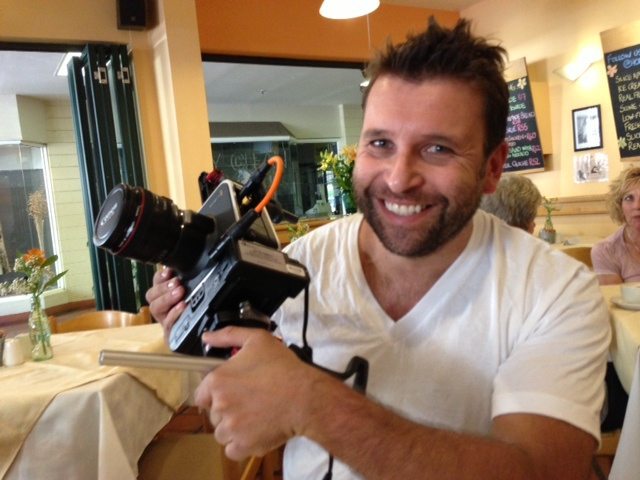
You can win incredible gear or software worth thousands by donating to the prostate cancer fundraiser here! Great cause great prizes!!!
OK…shooting footage for a review is one thing. Shooting some pretty stuff for fun is another. But shooting a proper project under severe time constraints, and in my genre of choice (documentary) is another!
This is what I decided to put the Blackmagic camera through, a mini doc shot in one day between workshops that I was teaching in Johannesburg in South Africa…although the film is not for a client – it’s a personal doc – I treated it like such, as I do with all my personal work and got it cut just 2 days after finishing the shoot.
Why the Blackmagic camera? After all, I had access to lots of cameras here. My current favourite camera, the Canon C300 (not mine as that one is at home), my favourite DSLR the 1DX (not mine as my one died here, a loaner from Canon South Africa…thanks guys!), the excellent FS700 and the 5Dmk3. The smart choice to be utterly frank would have been to take the C300. It’s proven numerous times to be a terrific documentary camera for me (Do check out my most recent doc shot on it here)
The C300 has proper audio, a terrific super 35mm sensor with magnificent image, a practical workflow with small files, and it’s small and pretty discreet. BUT, I needed to see just what the Blackmagic camera was capable of.
This was the challenge. Going to Ponte Tower in the middle of downtown Jo’Burg. A 70’s architectural monstrosity from the outside that houses an astonishing dystopian science fiction atrium. For quite some time THE place to live in the city, if you were anyone you lived in the massive 3 story penthouses with roof jacuzzis. Post democracy, it turned into something quite different. For the past 20 years it has been a centre for drug addicts and prostitutes. When I mentioned to some that I wanted to shoot a mini doc there, I was told that I was crazy, but that was from people who don’t realise that Ponte is not what it seems. Are things changing for the better there finally?
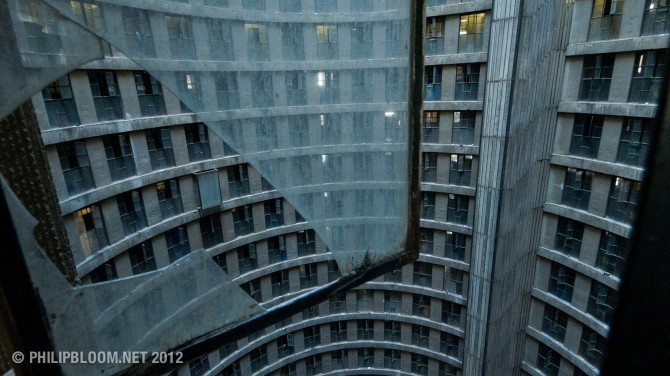
Technically here were the issues/ challenges:
1: With no permission to film there, we needed to be pretty discreet. So no big fancy rigs…the blackmagic is a camera that NEEDS a rig if you have any intention of shooting handheld…ok, so no handheld. All tripod. More my style anyway, it would also suit the piece better. The architecture is the main character in the piece and it demands to be shot classically on a tripod.
2: Wide angles…the Canon mount to sensor distance combined with the smallish size of said sensor = problematic wides.
3: Audio…quarter inch jacks are ok…no XLRs but they are balanced and we do have a headphone jack, but with no meters onscreen the idea of shooting lots of interviews in-camera was too risky. Sound should never be a compromise to your video.
4: Raw workflow…utterly ridiculous for a documentary like this to be frank. Prores HQ or avid DNxHD would have made way more sense, but I wanted to get to know cinema DNG raw and Resolve better. I knew I would also use up a lot of drive space.
5: Battery life…the internal would give me around 90 minutes. External battery solution is essential.
6: It’s dark there and this camera is not a low light camera. Fact.
So there we go, a few issues, but nothing I couldn’t work around.
1: Be subtle…easy. I spent 17 years shooting news, so I know how not to draw attention to myself. When we filmed it felt like I was in metal gear solid!
2: I bought the Sigma 8-16mm FOR this camera. With the crop of this sensor, I would get around 18.4mm equivalent field of view of a full frame camera. Wide enough. Not stupidly wide, just enough. The downside being that it is F4.5 at the wide end!
3: Using the camera purely as reference sound, I used the superb Roland R26 (my first proper use of it despite having it for 10 months!) with a Rode NTG2 (NTG3 not ideal for external recorders due to the need for phantom power which drains the batteries!). I did use the Rode stereo video mic pro for b roll sound and reference…
4: Deal with it. The raw workflow (which I will go into more later) took time but was beneficial for some shots, not all. The SSD’s I used were Kingston ones. 2x 240gb and 1x 480gb (these are recommended by Blackmagic for their camera. Not the fastest SSDs out there but a good price). I almost used up all of these…that is a lot of space. 240gb in cinema dng raw is around 30 minutes of rushes. So I didn’t shoot a lot, but documentaries always take up a fair bit of space as so much is unplanned and interviews can be long, so my two hours of rushes took up a lot of space. I normally also backup to 3 drives. I used 2 here, as I didn’t want to use up all my drives in South Africa on one project. I am shooting a film in each location, three more films to go!
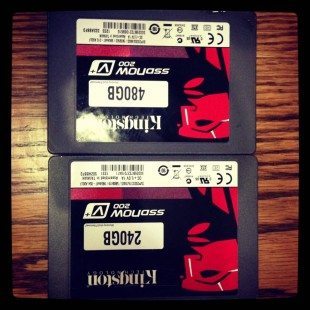
5: I used the Switronix battery packs. Awkwardly mounted under the camera (ideally it goes on your rig) but it did last all of the first day…just one of them and I brought 4 with me! They cost around $295 each so not cheap, but essential. You can buy them through my B&H affiliate below which doesn’t cost you any more but helps this site tick along nicely! 🙂
6: Well low light…always a problem. The camera shoots ISO 800 in raw as its the native, so not super high…you can push it a couple of stops if needed, and with doc work I push it more than I would on a commerical for example. On this piece, noise/ grain was not a bad thing at all….it added to the gritty nature. But I did have my Samyang/ Rokinon 24mm T1.5 Cine lens with me. Perfect for the low light, not wide, more a standard lens, so great for the interviews and others shots.
The shoot
This is the gear I had with me:
The Camera.
Tripod was a Miller Solo DS20.
RODE NTG 2 and Roland R26 for sound.
Zacuto top handle and Switronix battery pack.
Heliopan Variable ND with step up rings.
Sigma 8-16, Tokina 11-16, Rokina 24mm, Canon 50mm, Canon 24-105 (was used for time-lapse on the mk3), Canon 70-200mm F4 IS. (Thankfully the new firmware on the BMDCC now supports IS, which is essential with the rolling shutter issues of the camera)
My new Signature V-BAG, soon to be officially announced. A vacuum bag designed to hold your camera rock solid in the most awkward of places. Love this…it’s rather astonishingly handy!
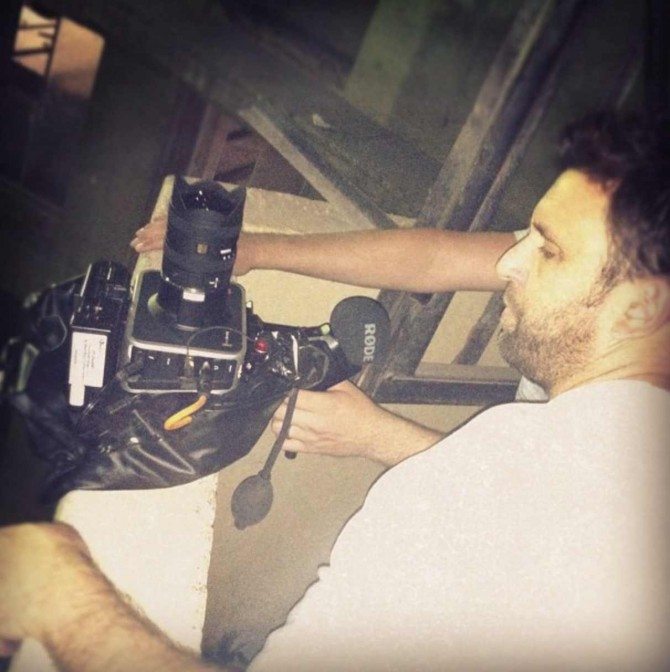
So, we had nothing set up, we had an in with one of the friends of two of the filmmakers whom had brought with me over to South Africa to host the workshops. That got us through security with the gear hidden in bags. But we had no interviews, and that was going to be key – having the voices to carry the narrative and not just have a mood piece of images.
The first thing I did was actually set up the 5Dmk3 to do a timelpase out of the epic view from the 52nd floor apartment there. I shot in 5 bracket HDR so I could capture the sun and the buildings. You can see it at the end of the film, it’s the only thing not shot on the Blackmagic. No timelapse on this camera!
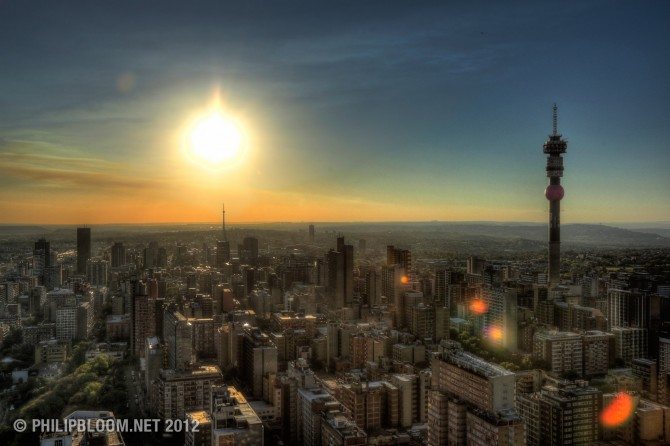
So Rick Joaquim and Dale Ballentine and I headed off to find our story. I rattled off as many shots as possible, quickly getting over my nervousness of hanging the Blackmagic camera over the side of the atrium to get those vertigo inducing shots. Dale managed to grab a couple of residents who were willing to talk to us on camera.
You may notice the unnatural framing of the interviews. That was a deliberate choice of course, and I like the negative aspect of them. It felt right for this…you may disagree which is fine!! 🙂
Although their accents are strong (for an Englishman) I decided not to subtitle the interviewees. If you are finding them hard to understand, I will do it…mainly time stopped me 🙂 !
We also got Malcolm, a journalist who had done a piece on the place just before moving in. He is one of a handful of white residents, and having him glued the piece together. He drove the narrative forward with the history of the tower and how we got to where we are now.
The fourth character of the film and the main one was of course the tower itself! I wanted there to be enough breathing space for the shots without voices under it. I also didn’t want all the talking heads to be in vision whilst talking, so it was simply a matter of balancing it out. But I made sure I overshot a lot for the building. This was the key part of the filming, naturally. The interviews were each around 8 minutes long. One of the biggest pains was interviewing whilst operating. There is NO warning when the SSD will run out…it just stops. So you have to keep checking to see if it is still recording. Not ideal, as it distracts the interviewee and you too! You must keep that eyeline and glancing to camera constantly makes them glance to! On one bit the SSD ran out whilst talking to Malcolm. I noticed about 30 seconds after it happened. I re-asked the question. His first take was better and as I had the sound on the Roland I just used that and covered it with other shots. A good thing about the dual system sound…had I recorded the sound in-camera here, I would have lost it completely. BUT I would prefer to record in camera AND have an idea how much space I had left.
Yes, I did struggle with light. I had no additional lighting with me, but it wasn’t lights that I needed, it was faster glass. The inside of the tower is very bright near the top but go 20 stories down and the inside is dark as. I struggled with my F4.5 Sigma. It worked, but as the afternoon became evening that was it. Done. The Tokina is the next closest to that and its F2.8 performs much better, but it’s just not really wide enough for some of the shots I needed. In fact, we went back 3 days later on Wednesday (the rest of shooting was Sunday) to get those shots from down the bottom looking up and the key shot: the building from a distance. No point doing a film about Ponte and only seeing it from the inside!
POST
So, everything was raw. Initially I had intended to shoot the interviews ProRes. It would have made way more sense, but I simply forgot, hence I used up a lot of space. The upside of raw is the flexibility it gave me, especially on those massive contrast shots. I could decide in post what to keep and what to lose. Even this camera with its excellent dynamic range could not capture the very dark pit where we filmed at the bottom AND the very bright sky right at the top. You have to choose. Below are two frame grabs. One is REC 709 the other is BMD film. You can see more info in the BMD film of course, but it’s too flat. Both of these looks are simply achieved via metadata – nothing changes in the raw. It’s in Resolve that you decide what to keep etc…you can start masking things and keeping as much of both as you can. I am not skilled enough or familiar enough with Resolve to do the fancy stuff yet. My friend Dan Moran is going to take a crack at grading this for me in Resolve. It will be great to see how different he makes it compared to my skills. It will really show what a pro colourist does!
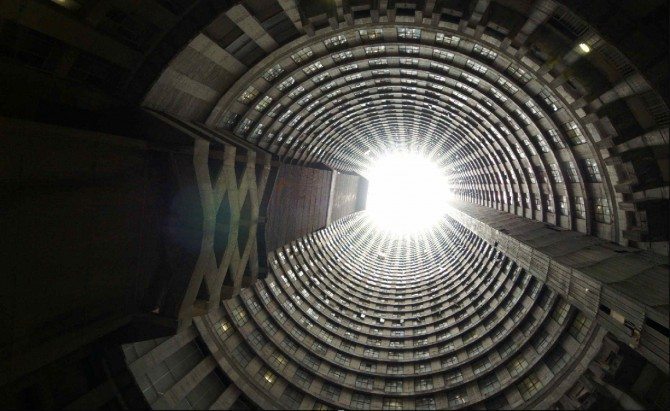
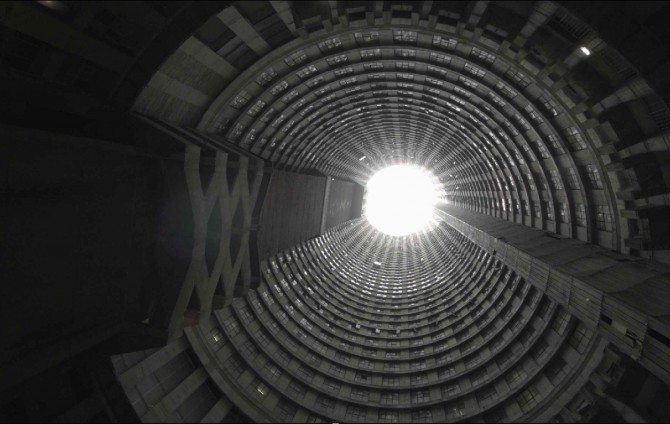
I did do some very stopped down shots to capture detail in the sky, with the intention of keying them in…I might get Dan to do that 🙂
So my workflow was simple. No round trip. Nothing fancy. I needed to get the edit done and out so I could move onto the next film, which I start shooting on Sunday, and I couldn’t have this one still sitting around. So I did all my basic colour correction. Fixing exposure, bringing back highlights, pushing up shadows, tweaking white balances. Then I exported the whole lot, not as proxies, but as full ProRes 4:2:2 to edit with and master to. I did keep all my original file names and can easily XML back to DaVinci Resolve once Dan colour corrects my frames. That is one of the coolest features of the full Resolve rather than the lite version. You can export single frames with all the metadata which are small enough to email to your colourist. He then works on those frames, sends you the data (all the colour-correction nodes he has done) which are very small files, and you import them into Resolve, apply them to the entire clips, and VOILA…professionally graded by someone thousands of miles away, even when there is zero chance he can get the full rushes from me!
I then edited in Premiere CS6 on a ProRes timeline, making all my previews render as ProRes too, so that when I come to export I could click “use previews” and save a lot of time. Not using ProRes previews means you are using the intermediate system, which is not of high quality. If you’re using this please never click “use previews” as you will lose quality!
My grading was done within my favourite fast colouring program Colorista II. I added a touch of Looks 2 in there too.
For music, I got all but one of the tracks from the music bed. I use these guys a lot. Great tracks by real bands and pretty reasonable prices. Most of my recent reviews for cameras are chock full of their music. It makes a huge difference!
It was damn tricky finding the right tracks and getting the right balance. Ideally, I would have used more natural sound, but for some reason all the stuff I got in-camera came out really poor. No idea why. Sounds like an internal mic even though I had the Rode SVMP plugged in…need to investigate.
So all in all how did I find it? Well despite the many obstacles, I really enjoyed shooting with it and was very happy with the end results. I did notice a bit of moire here and there. Lots more than my C300, and it’s not as sharp. Not always a bad thing though. Rolling shutter issues were also quite apparent. The worst example being the lamp posts on the drive-by shot near the beginning, although most CMOS cameras would struggle with this shot too…dynamic range with the raw was of course wonderful, and it’s easy to tweak in Resolve, but it’s the rest of that program that I need to learn.
To show an example of stupidly big dynamic range here is the same shot with two exposures from the BMD tone mapped onto each other via Photomatix pro…I shot a number of shots like this…am sure in Resolve I can do something similar but more subtle…
If you would like to play with a raw cinema DNG from a shot like above then you can play with the below one!

I need a few firmware fixes on the camera to make this a more feasible camera for these types of shoots. Audio meters, space left on SSD, F-stop display, more accurate battery meter, bigger digital punch-in to check focus. Give me those, and I will be a lot happier using it! One thing I had to take off which I had just put on was my 3M anti reflective screen for iPad, which I cut to fit the screen here. It just made it too hard to see what was in focus as it softened the whole image. I removed it…I need to find a better one!
My concerns with the EF mount camera over the MFT one have been somewhat placated by this shoot. With the right glass, it works just great. As long as you get that Sigma…just need an F2.8 version. I still could do with some faster 24mm equivalent lenses, but you can’t have everything. I look forward to trying out an MFT one as soon as I possibly can…but with the addition of IS in the new firmware too, it’s a much better camera, that will get much better when those firmware niggles I mentioned earlier are addressed.
What am using for my next 3 films in South Africa? Well the 1DX is next, then a film on the FS700, then finally the one at the game park on all three. If I had brought my C300, could I have done without all these other cameras?…more or less, but no timelapse, no high speed. I have the cameras here for the workshops, so I may as well use them. Every camera has its strengths and weaknesses.
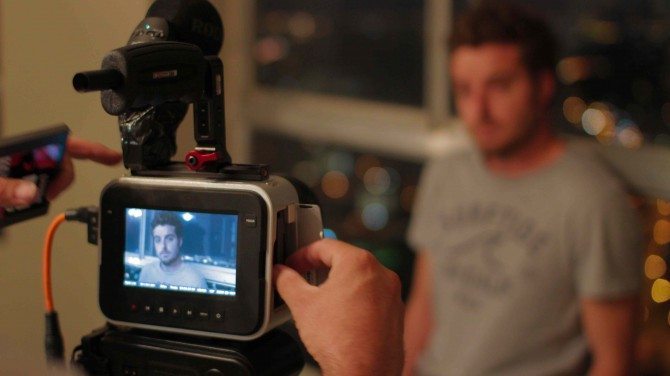
In a way, the Blackmagic turned out to be a great camera for this project. I didn’t need any slow motion at all (in docs you rarely do!) and this is the one of the most extreme dynamic range places I have ever filmed. Only an Epic with HDRx could have given me a much bigger dynamic range, and there would be no way I would have taken that camera into Ponte Tower! The joy of the £2000 raw camera! 🙂
Had I shot prores or DnxHd to be honest it would have looked very similar. I didn’t use the extra resolution and I think the 1080p looks pretty much the same. The main difference with raw and these compressed codecs is whilst shooting I would have had to nail my exposure and decide on highlights or shadows then and there rather than have the lovely flexibility to choose in post!
Well the most important thing is that I hope you enjoy the film. It’s ten minutes long, but I think it is well paced and doesn’t feel long. Enjoy!
Don’t forget you can win incredible gear or software worth thousands by donating to the prostate cancer fundraiser here or taking part in the epic film competition! Great cause….seriosuly great prizes!!!
Ponte Tower from Philip Bloom on Vimeo.
Review of Blackmagic Cinema Camera from Philip Bloom Reviews & Tutorials on Vimeo.

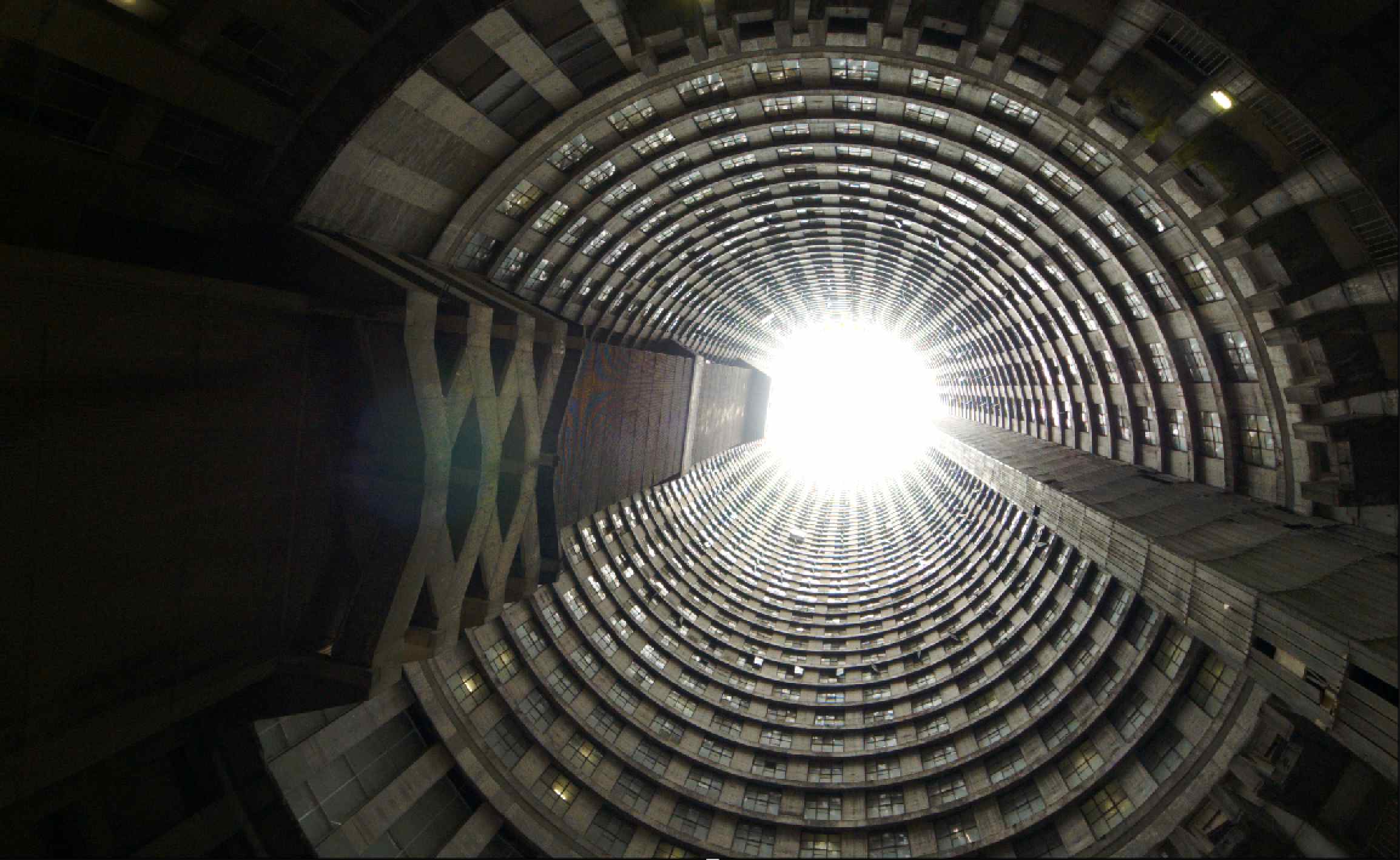



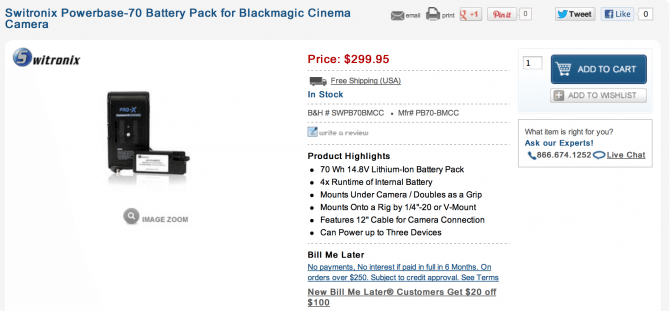




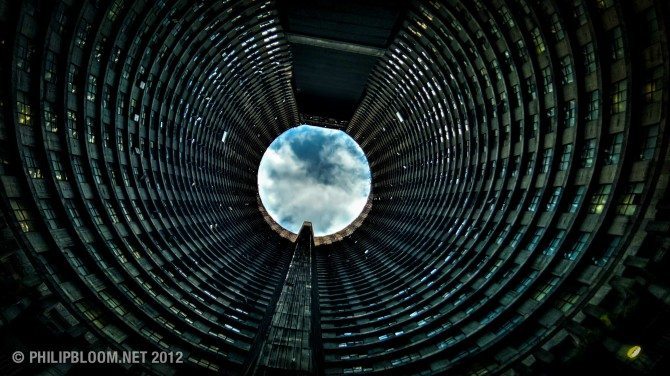
67 comments
Philip you should try to bring that one frame you posted here into AdobePhotoshop/Lightroom. BMD Film in Resolve does bring in some more latitude but it’s no comparsion to what you can get with AdobeRaw. For extreme situations that one is unbeatable. Try to bring the frame into Adobe and try exposure, hightlight recovery and shadow push and you will be amazed, I promise 🙂
You can enormous things in Resolve too…BMD film was just used a starting point rather than REC 709…tried to see what highlight info there was an there was none. Did two exposures as a test. For the sky adjusted by 6 stops and was able to see it! HUGE!!
Oh well I don’t know exactly, my BMCC hasn’t arrived yet 😉
I just read this thread about the differences ( http://forum.blackmagicdesign.com/viewtopic.php?f=2&t=454&start=40 ) and tried it with the raw files myself. I could get back detail (and color) from the first super-overexposed frame with AdobeRaw I was not able to get with Resolve/Film
check the DNG i linked to in this post…
Oh cool thx, will check it out
Hi Philip: Thanks for all your efforts. This is terrific information, and obviously hard-won, too. Your doc looks fantastic. I look forward to seeing a higher bit rate download if/when you’re able. Get that Vimeo tip jar on there, too! 🙂 Cheers!
… OK, now I see you’ve enable a higher bit rate download, and tipping, too. Mucho gracias, amigo!
Thanks Peter!
For the benefit of your viewers who may not know: Hopefully BMD will add VU meters via a future firmware update ASAP, but in the meantime a partial solution is that the BMCC currently allows you to route 1 audio source to 2 channels, each set to a different level (such as 1 high & 1 low). If you monitor on good headphones to avoid gross distortion, one channel should be good even if there’s a loud sound or someone raises their voice, etc. Again, not a substitute for built-in VUs or an external mixer with VUs, but a partial workaround. Cheers.
Great job Philip as always!
Question about the moire issue…
Since you are shooting in RAW, is there a debayering option in Resolve that can eliminate or minimize the presence of moire?
no idea! will ask!
Very impressing for a one day shooting! beutifull shooting. very cinematic look, very “filmy”. CONGRATS!
thanks! about 6 hours in total!
Amazing documentary thanks a lot Philip, very interesting and informative. Made me go and research the history of the building, as an architect it’s crazy to see how the faith of projects changes over time..
Great little doco. Looked great, really enjoyed the less-conventional interview angles too. Talk about dystopian…That building certainly is very panopticon-esque…
Beauty. One of your most striking pieces.
It’s still not the camera!
It’s the eye.
Really great choice of music. Must check The Music Bed out! Once again great job and the final framing of the shot after the gradual tilt down is fantastic.
Phil, Once again you have shared with us your creativity, passion and professionalism. This documentary inspire me to keep working in my passion, filmmaking. I met you in Boston 2 yrs ago I think and I really enjoy your workshop. I’m thinking of buying the BMCC, but I think I will wait, Thanks a lot!
yours, Jason Inoa
That was a great documentary Philip! The images that you got out of the BMC look amazing.
great documentary philip. really interesting place that i wouldn`t have known otherwise. one thing that stood out was the surprising amount of noise in some of the shots. is it just a combination of the sensor, low light, and slow glass? or was the exposure pushed too far?
it was dark…and had to push camera in post to compensate!
Hi philip, compare with gh3, which one has more dynamic rance?
i shall let you guess! 🙂
haha I guess the BMD has better dynamic range, also care about the rolling shutter issue between these two, since these are not shipped yet, I guess the compare results could be confidential even you already have a hint.
Hi Philip,
really enjoyed watching that, it was nice to see what you can do in a limited location and what the camera is capable of. Im sure that the next firmware update will hopefully address those issues. Also looking forward to seeing what the V Bag does as my old bean bag set up is on its last legs.
Thanks for sharing this,
Richie
Thanks Philip great review, the footage looks great. Hopefully you can do a comparison between the BMCC & GH3 & the SLT-A99. It would be great to hear your thoughts comparing their quality, and features.
Really great piece, Phillip! Enjoyed it a lot!
South Africa is such an exceitment and strange place.
I really wish you could go a bit in depth with grading in Resolve. I’m finding my self in big troubles, because even the slighest speed remapping or some certain transitions, not to mention plugins, the XML dosen’t work at all!
So, some information about your exact workflow would be much appreciated! 😉
Hello Philip,
I cant find anything on the internet about the BMC audio quality.
Are the results broadcast quality?
Is it better than the audio on the Canon 5D or 7D (with firmware updates)?
Nice greetings from germany,
André
i haven’t tried to be honest…the lack of meters puts me off..
Although the BMCC’s audio recording features are still a work in progress, Blackmagic Design claims it has impressive specs:
http://www.blackmagicdesign.com/products/blackmagiccinemacamera/techspecs/
However, as Philip points out, the camera doesn’t doesn’t yet feature on-screen VU meters. In a comment up above this one I describe a workaround for mic level inputs.
The new v.1.1 firmware that BMD recently made available reportedly improves the camera’s sound quality when recording from a mic level source. There’s a before & after sound sample here:
http://www.bmcuser.com/showthread.php?1234-How-good-is-the-audio-quality-of-the-bmcc&s=fefd148792b1b0ff55a86afecdd8603c&p=27497&viewfull=1#post27497
When using an external audio mixer that has its own VU meters, or line level sources, the above issues are not a problem. In just a few simple steps an external mixer’s VUs can be calibrated to substitute for the BMCC’s current lack of them.
Hopefully BMD will release another firmware update soon to add VU meters and other basic capabilities to the camera. The good news is that’s they’ve already done this when they added support for lens IS (image stabilization). So there’s hope BMD will continually improve the already wonderful BMCC over time. Of course, there’s no guarantee this will happen.
More information about the v.1.1 firmware update is here:
http://herefortheweather.wordpress.com/2012/10/04/bmcc-new-firmware-v-1-1-with-new-features/
Cheers.
one would hope so
Philip,
thanks for providing the source file — it convinced me to buy the Blackmagic in the next weeks as i’d like to have a pro camera for the shoots. 5D2 is nice to work with, but it’s sometimes difficult with the stock firmware ( i am using magiclantern most of the time).
As i currently have decent priced optics (due to non-pro status) from Canon and others, i can see what the BM is capable of recording…
Or do you recommend another (same) priced camera for video shooting ?
Camera/Image aside. A fascinating little doc. Really enjoyed it!
great doc. & article, thanks! I loved the interview framing
Philip, thank you for these beautiful, filmic images and a chance to see and hear these interesting people. A really nice doc, I can’t believe you shot it in six hours. The footage of the tower was awesome and so were the inserts and interviews (especially in the staircase). As you mentioned in your post, there has been some awful video-like footage from the camera on the web lately, so I was worried it wouldn’t deliver. You proved otherwise. Personally, I even prefer the look to the C300, maybe because of the grain in some shots. I’m curious what the new grade will look like. Maybe the RAW revolution is the new DSLR revolution. The BMCC is definitely a sensational bargain, but unfortunately there are very few fast extreme wide lenses available used and you need a pretty fast computer, SSDs and truck loads of hard drives for backups. A 1.6 crop version, if it ever comes, could save us some lens money. And I’m hoping they’ll integrate the Cineform Raw codec. Could you imagine this being your only camera?
Greetings,
George – http://tshit.de/freshdailies
thanks!
No way could this be my only camera or really should be anyone’s only camera!I covered it quite fully in my review. This shoot hasn’t changed the opinion. Lovely image but a camera needs to be more than that.
p
Brilliant piece as always Philip, you really tell a great story.
I dont however feel the black magic cam gave you anything more beautiful or cinematic than the c300 with 1dx footage would have. your thoughts?
Hi Philip,
The Dutch newspaper NRC wrote a small piece about your documentary:
http://www.nrc.nl/nieuws/2012/10/13/mini-docu-de-ponte-tower-in-johannesburg-icoon-van-verval/
During every shot of the interior of the building, I half expected a freshly single-handed Luke Skywalker to come falling through the center and then be inexplicably sucked into one of the apartments.
Splendid job, Philip. I wish I had half your discipline to put together anything significant on so short a schedule.
A beautiful thought-provoking film – you are a great inspiration to me – I always go for content over technique and I’m far more interested in the people living in this building and the story of the building itself, instead of which camera you use. I am fascinated by the life of buildings, by how they adapt and develop a life for themselves, almost regardless of the whims of human trends and desires! It’s great to see a piece of work like this being made purely because it was self-motivated.
I have one question for you – I am on the verge of buying a 1dx and I read above with horror that yours ‘died’ on you. Can I ask what happened? Also I heard that you ‘lost’ a 5d mkii due to loading up magic lantern – I am also just about to install magic lantern on my 5d mkii and on my 7d and I was wondering if it was true? I know we install magic lantern at our own risk. I just haven’t heard of there being many problems with it. thanks for taking the time to answer and I’m looking forward to the other 3 films you are about to make.
Going to CVP to see the Blackmagic Camera this week and encouraged to see such good “real World” results.
I always try to encourage junior editors to edit a whole piece against a time constraint to improve their skills or learn a new piece of software, much in the way that this film tests the camera more than shooting on a beach in Kent!
Don’t know how you can produce this work in such a short time though – must be your news background Philip!
I think lens makers should be listening to this need for wide angled fast glass on the camera; a well priced f1.4 or f1.8 would be a huge seller. It would only have to be a DX lens wouldn’t it?
yes…well EFS, the canon equivalent!
No lie Philip, I love your docs. You’re eating disorder doc was the first of your films that turned me onto you in the first place, so when I heard today at a festival that you shot a Doc,on a BMCC, I had to see it.
After watching what must have been your hardest to make camera review for the BMCC, I knew the limitations on the camera and sort of lost interest. Then to think you’d go on to shoot a doc with it blew my mind. That’s a new level of masochism! Did having the challenges of shooting a doc with the BMCC make the shoot more fun? I know sometimes having limitations can push you further and make one focus on the basics, and this short seemed to benefit from the approach.
Keep up the great work.
Frisby
Thanks Charles!
Stunning visuals and great story as one has come to expect from you Philip. Quick question about the timelapse sequence, do you have to use bulb ramping on a day to night HDR sequence?
thanks! no just AV mode 5 shot HDR
Hey Philip, the shot from down the tower is awesome, it looks like the prison in “Dark Knight Rises” !
Loved the documentary!
I want to buy a camera soon and I have seen a lot of footage. Is a very low hours Red Scarlet a much better camera than a new BMCC?
Thanks
Adam
possibly if they throw in lots of stuff. it is of course a much better camera…just a much more expensive one
Wow, nice work. Glad to see something positive coming out of SA, all the stuff I see tends to be doom and gloom.
In 93 I went up to the roof of Ponte with my dad who was designing the steelwork for the ugly circular sign you see on the top. The workers had no helmets or safety gear and were climbing around 50+ stories off the deck without a care in the world – scared the crap out of me just being on the roof! It’s an iconic building in a scary neighborhood. As a 14 year old I’d get the bus into Joburg and walk around by myself, now, not sure I’d do that now. I left in 94.
And yet again it seem like the C300 would be a better all round camera but at 5x the price, not sure. I’m was looking to do exactly what you did with a BMC, run and gun / short docs but seems like it has a ways to go. Not made the plunge yet.
you are just incredible Philip…look at how detailed you were in explaining all the processes. great guy indeed.wish i can get to one of your workshops one day. do you mind doing one in Nigeria? and please, is the audio a natural wave format in the documentary or you tweaked it. if you did, please what software do you use in editing audio?
big brother, i love that word “Dead space” in the reply to my comment previously. thanks alot.
Hi Philip, the framing during the interviews was inspired and inspiring! Very cool. Also liked the eyeline and liked the lighting.
The guy who’s more flat against the wall — how on earth did you get the light to fall off like that so that it’s like there’s a halo around him? Did you simply add the dark patch on the right of frame in post?
Wlil be waiting on more info about that V-bag!
thanks! yes…little vignette!
Mr. Bloom, just wondering, any particular reason you used the DS instead of the Compass on this shoot?
simple! weight on my gear with all my stuff here…you have to compromise sometimes
Are you talking about weight of transportation to South Africa, or weight on that particular shoot. Thanks!
7 flights in 3 weeks…weight is an issue. you make compromises. ds20 still not a bad head.
Thanks for the info. I watched all three docs and they are spectacular.
Phil, did you need to purchase the charger separately for the Switronix Powerbase 70 pack?
no it comes with it!
Thanks for the in-depth review. Great stuff. What was it shot on? I think I want to buy whatever THAT camera is!
Hi Philip,
Great documentary. Your footage always looks very nice and sharp on vimeo. My videos on there always feels a bit softer and muddier than I want (even when the source is an Alexa) and I just wondered what bitrate settings you use in premiere when you upload for vimeo? and do you add sharpness to all your videos before you upload them?
Love the site, keep up the good work.
Philip I love your camera reviews. I work in VFX and want a camera mainly for greenscreen work and can’t afford to buy a Red. The BMCC seems to be the ideal candidate, except for the lack of a high framerate option for slowmotion.
Do you know if Blackmagic will add a higher frame rate to the camera??
No idea am afraid!
Hey Philip,
I’m trying to sort out the raw workflow you mention, and something doesn’t make sense to me… I may be daft.
You mention – “Then I exported the whole lot, not as proxies, but as full ProRes 4:2:2 to edit with and master to.”
If you shot in raw, isn’t exporting the whole lot to CS6 in ProRes HQ a proxie? Otherwise you’d be exporting it over as raw files – no? I’m asking also because editing raw files in CS6 would probably be more than a laptop could handle. Thanks.
if you edit with the proxy and master with the proxy it is no longer a proxy! a proxy is a lesser quality version that is never intended to be used to finish with, it is to used with an online/ reconform. I used ProRes as my master format. I never went back to remaster so this was not a proxy…
Ahhh! got it. makes sense. thanks for that.
cheers.